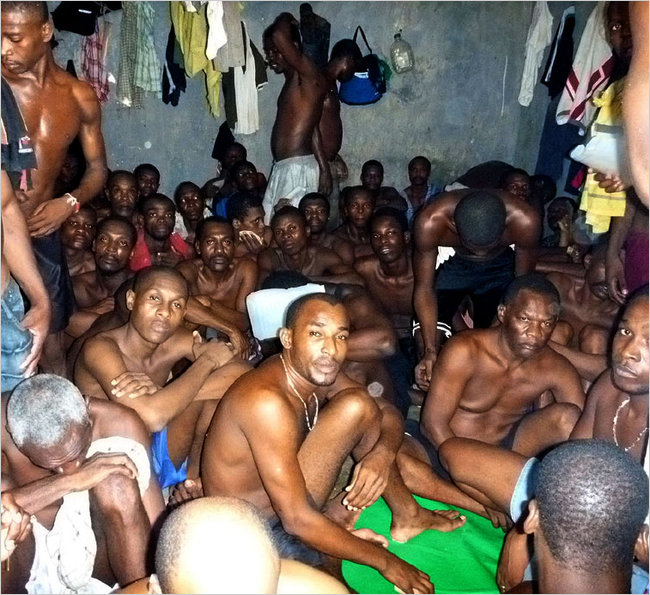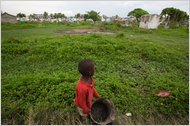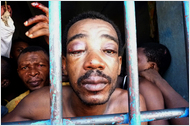| Want to send this page or a link to a friend? Click on mail at the top of this window. |
More Special Reports |
| A SPECIAL SECTION: Haiti since the January 12, 2010 Earthquake |
| Posted May 24, 2010 |
| International |
|
Signs of Cover-Up After Killings in Haiti Prison |
|
|
|
|
|
|
|
In Wake of Quake, Uprising Led to Shooting of Unarmed Inmates |
|
|
|
|
 |
|
|
CREDIT NO CREDIT |
|
| The overcrowded prison in Les Cayes, Haiti, after a January escape attempt ended in disaster, with a riot and fatal shootings. Many victims were buried in an unmarked grave, below | |
|
By DEBORAH SONTAG |
|
and WALT BOGDANICH |
|
|
 |
| The bodies of 11 detainees were sent to a local cemetery by ambulance from the morgue. The bodies were buried in two unmarked graves, one of which is visible at rear. Credit: Γngel Franco/The New York Times |
|
|
|
THE NEW YORK TIMES |
 |
|
THE NEW YORK TIMES |
| One of the many lucky detainees or inmates who were only tortured. |
| A Fragile Justice System |
| A Cell Erupts |
| The Police Take Over |
| A Priest's Witness |
| Gruesome Photographs |
| A Police Report |
| Wehaitians.com, the scholarly journal of democracy and human rights |
| More from wehaitians.com |